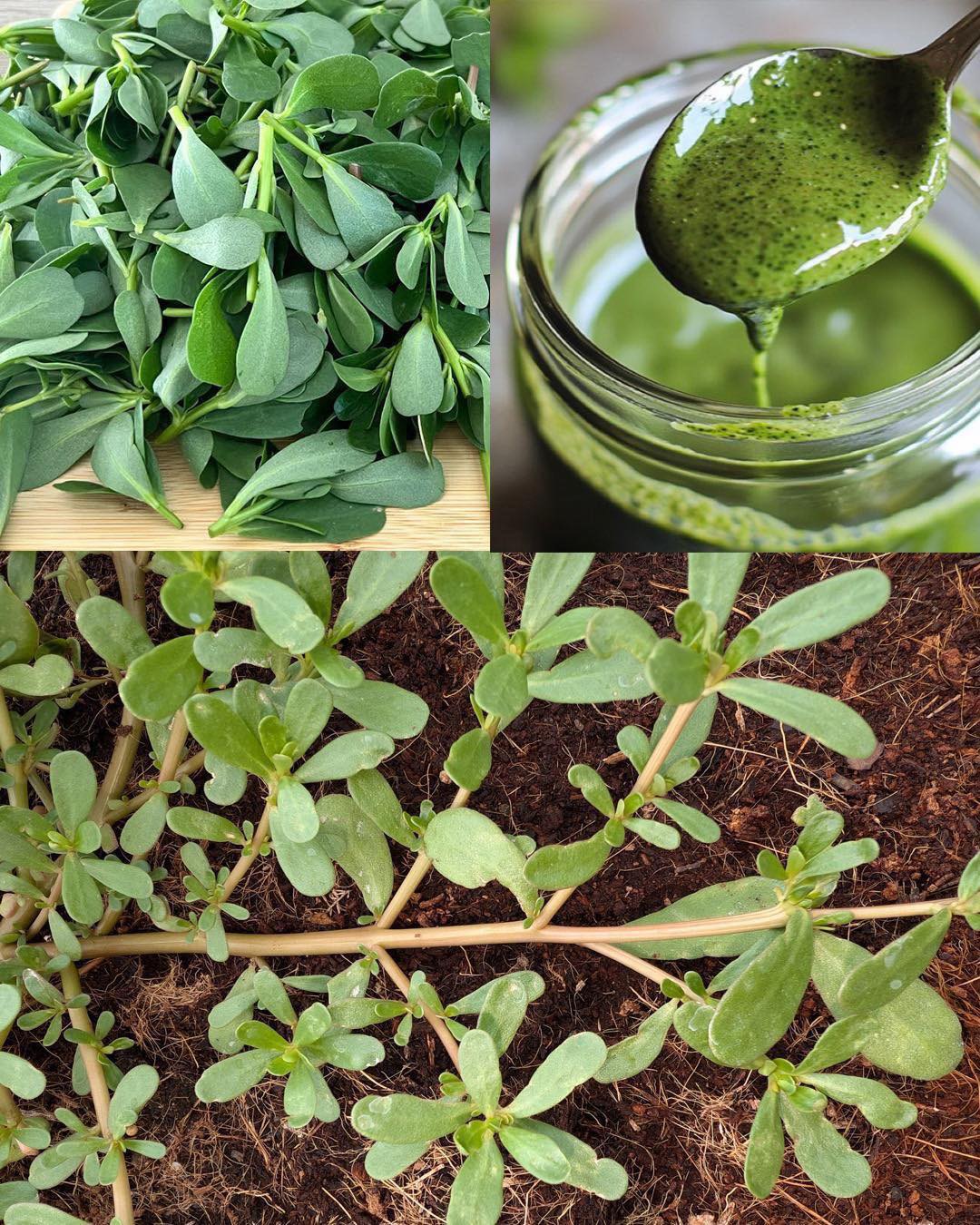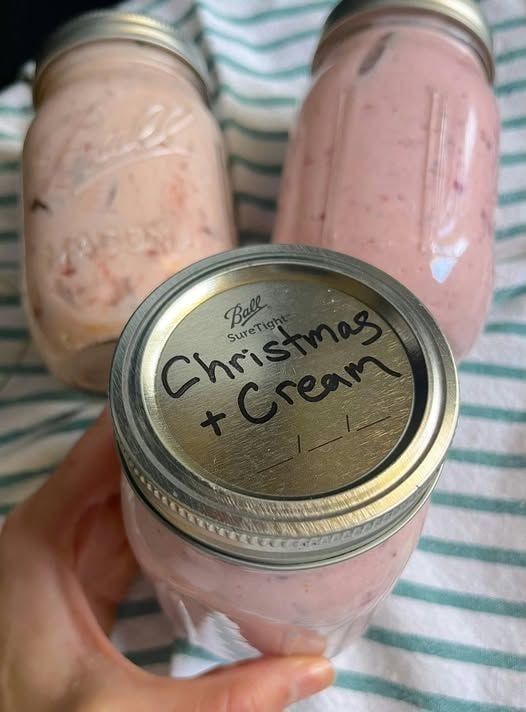In the vast and diverse world of plants, there exists a humble yet incredibly potent herb that often goes unrecognized for its remarkable health benefits. Purslane, commonly mistaken as a mere weed in gardens and sidewalks, is in reality a nutritional powerhouse and a veritable lifesaver for those who know how to harness its potential. Despite its unassuming appearance, this succulent plant is a treasure trove of vitamins, minerals, and bioactive compounds, making it one of the most beneficial greens that most people overlook. The irony is palpable – what many try to eliminate from their lawns could actually be the missing key to a healthier life. Beyond its misunderstood reputation lies a source of profound health benefits, waiting to be integrated into our daily diets. This article aims to unveil the myriad of advantages purslane offers and guide you on how to incorporate this “common weed” into your lifestyle, transforming it from an overlooked garden guest into a celebrated nutritional hero.
Health Benefits of Purslane
Purslane is not just a garden invader; it’s a potent source of several health-boosting compounds, each contributing to your overall well-being. The plant is packed with omega-3 fatty acids, antioxidants, vitamins, and minerals that can support everything from heart health to skin repair. Here’s a closer look at the key health benefits that purslane offers.
1. Source of Omega-3 Fatty Acids
Purslane stands out as a rare vegetarian source of alpha-linolenic acid (ALA), a type of omega-3 fatty acid that is essential for maintaining heart health. Unlike many other plant-based foods, purslane contains significant amounts of ALA, making it a valuable source of omega-3 for those on plant-based diets. ALA plays a crucial role in reducing inflammation, lowering the risk of heart disease, and supporting brain function. Regular consumption of purslane can contribute to improved cardiovascular health, making it an important addition to your diet.
2. Antioxidants Galore
Purslane offers an impressive lineup of antioxidants, including vitamins A, C, and E, as well as glutathione. These antioxidants are vital in protecting cells from oxidative stress, which is a major contributor to aging, heart disease, cancer, and other chronic illnesses. By neutralizing harmful free radicals in the body, purslane helps slow down the aging process, supports immune function, and reduces the risk of degenerative diseases. Regular consumption of purslane can provide long-term benefits by safeguarding cellular integrity and promoting overall health.
3. Anti-inflammatory Properties
Chronic inflammation is linked to a wide range of diseases, including arthritis, diabetes, heart disease, and cancer. Purslane’s omega-3 fatty acids and other anti-inflammatory compounds, such as betalains and flavonoids, help mitigate inflammation throughout the body. By incorporating purslane into your diet, you can help reduce pain and discomfort from conditions like arthritis while also lowering the risk of chronic diseases associated with inflammation.
4. Skin Care Powerhouse
Purslane’s antioxidants do more than just protect your internal organs—they also offer significant benefits for your skin. The anti-inflammatory and healing properties of purslane can accelerate the skin’s ability to repair itself, making it a great option for reducing the appearance of scars, healing acne, or even alleviating conditions like eczema. The plant has also been shown to improve overall skin texture, making it a popular ingredient in skincare products aimed at rejuvenating and nourishing the skin.
5. Mineral-Rich
Purslane is a powerhouse of essential minerals, including calcium, magnesium, potassium, and iron. Calcium and magnesium are crucial for bone health, while potassium helps regulate blood pressure and heart function. Iron, an essential mineral for oxygen transport in the blood, makes purslane especially beneficial for individuals with anemia or those looking to boost their iron intake. These minerals are essential for the body’s day-to-day functions, from muscle contraction to energy production.
6. Vitamin C Source
As a rich source of vitamin C, purslane supports the immune system, helping the body ward off infections and diseases. Vitamin C is essential for collagen production, which is necessary for skin repair, wound healing, and maintaining the integrity of connective tissues. Incorporating purslane into your diet not only helps prevent illness but also contributes to the regeneration of damaged tissues, leading to healthier skin, gums, and joints.
7. Beta-Carotene
Purslane is high in beta-carotene, a precursor to vitamin A, which is important for vision health, immune function, and skin integrity. Beta-carotene helps protect the eyes from oxidative damage and age-related conditions like macular degeneration and cataracts. Consuming purslane regularly can contribute to better vision and overall eye health, as well as promote healthier skin by encouraging cell turnover and collagen production.
8. Melatonin Content
Melatonin, the hormone responsible for regulating sleep patterns, is naturally found in purslane. While melatonin is primarily known for its role in sleep regulation, it also has antioxidant properties and helps regulate various body functions. Including purslane in your diet can promote better sleep quality, helping you fall asleep more easily and stay asleep longer. This is particularly beneficial for individuals who suffer from insomnia or have irregular sleep cycles.
9. Cholesterol Reduction
Purslane’s betalain antioxidants not only reduce inflammation but also assist in reducing the risk of cholesterol damage to blood vessels. Purslane has been shown to help manage LDL cholesterol (the “bad” cholesterol), reducing the likelihood of arterial plaque buildup and improving overall cardiovascular health. This makes purslane an excellent natural remedy for maintaining healthy cholesterol levels and preventing heart disease.
10. Mood Regulation
Purslane contains tryptophan, an essential amino acid that helps produce serotonin, a neurotransmitter that regulates mood, appetite, and sleep. Serotonin is often referred to as the “feel-good” hormone, and increasing its levels can help combat depression, anxiety, and mood swings. By supporting serotonin production, purslane contributes to emotional well-being and helps stabilize mood, making it a valuable addition to your diet for mental health.
Leveraging the Benefits of Purslane
Now that we know the incredible health benefits of purslane, the next step is to incorporate this superfood into our daily lives. Fortunately, purslane is not only nutritious but also highly versatile in the kitchen. It can be enjoyed raw, cooked, or in innovative dishes, making it easy to add to any diet.
Raw Consumption
- Salads: The simplest way to enjoy purslane is by adding it raw to salads. Its crunchy texture and slightly tangy, lemony flavor enhance the taste and nutritional profile of any salad. Pair it with other greens like spinach, arugula, or kale for a nutrient-packed meal.
- Smoothies and Juices: For a quick and easy nutritional boost, blend purslane leaves into smoothies or juice them. This method preserves the omega-3 fatty acids and antioxidants, delivering them in a convenient, digestible form. Pair it with fruits like bananas, berries, and citrus for a refreshing and healthful drink.
Cooked Dishes
- Sautéed Greens: Purslane can be sautéed with garlic and olive oil for a simple and flavorful side dish. Its mild flavor and tender texture make it an excellent accompaniment to meats, poultry, or vegetarian dishes. For an added boost, sprinkle some lemon juice or chili flakes for an extra zing.
- Soups and Stews: Adding purslane to soups and stews not only thickens them naturally but also infuses the dish with its health-promoting compounds. It pairs well with vegetable-based soups or Mediterranean dishes, providing a nutritious boost to your meals.
Innovative Uses
- Pesto: For a nutrient-dense twist on the traditional basil pesto, replace some or all of the basil with purslane. This variation will give your pesto a unique flavor and increase its omega-3 content, making it a superfood-packed spread or pasta topping.
- Pickles: Purslane’s succulent leaves and stems can be pickled, creating a tangy and healthy condiment. Pickled purslane can be added to salads, sandwiches, or served alongside grilled meats for an extra burst of flavor.
Tips for Incorporation
- Start Small: If you’re new to purslane, begin by introducing it into dishes where greens are typically used. Its mild, slightly peppery flavor makes it a seamless addition to salads, sandwiches, or stir-fries.
- Mix It Up: Combine purslane with other greens in dishes to get a variety of textures and flavors, as well as a broader range of nutrients. Try mixing it with arugula, spinach, or kale for a more complex flavor profile.
- Use It Topically: For skin care, consider creating a purslane extract or infusion. Use this as a facial rinse or add it to DIY face masks for its antioxidant and anti-inflammatory properties. It can also be used to soothe irritated or inflamed skin.
Conclusion
Purslane is a testament to the idea that sometimes the most beneficial health resources come in the most unassuming packages. What many dismiss as a common weed is, in fact, a nutritional hero with the potential to significantly enhance our health and well-being. By incorporating purslane into our diets and even our skincare routines, we can take full advantage of the myriad benefits this plant has to offer. From its heart-healthy omega-3 fatty acids to its sleep-promoting melatonin, purslane provides a comprehensive suite of nutrients that can support a healthier, more vibrant life. Let’s embrace this “garden weed” as the superfood it truly is and make it a staple in our quest for a more nutritious and balanced diet.
Inspired by this? Share the article with your friends!





